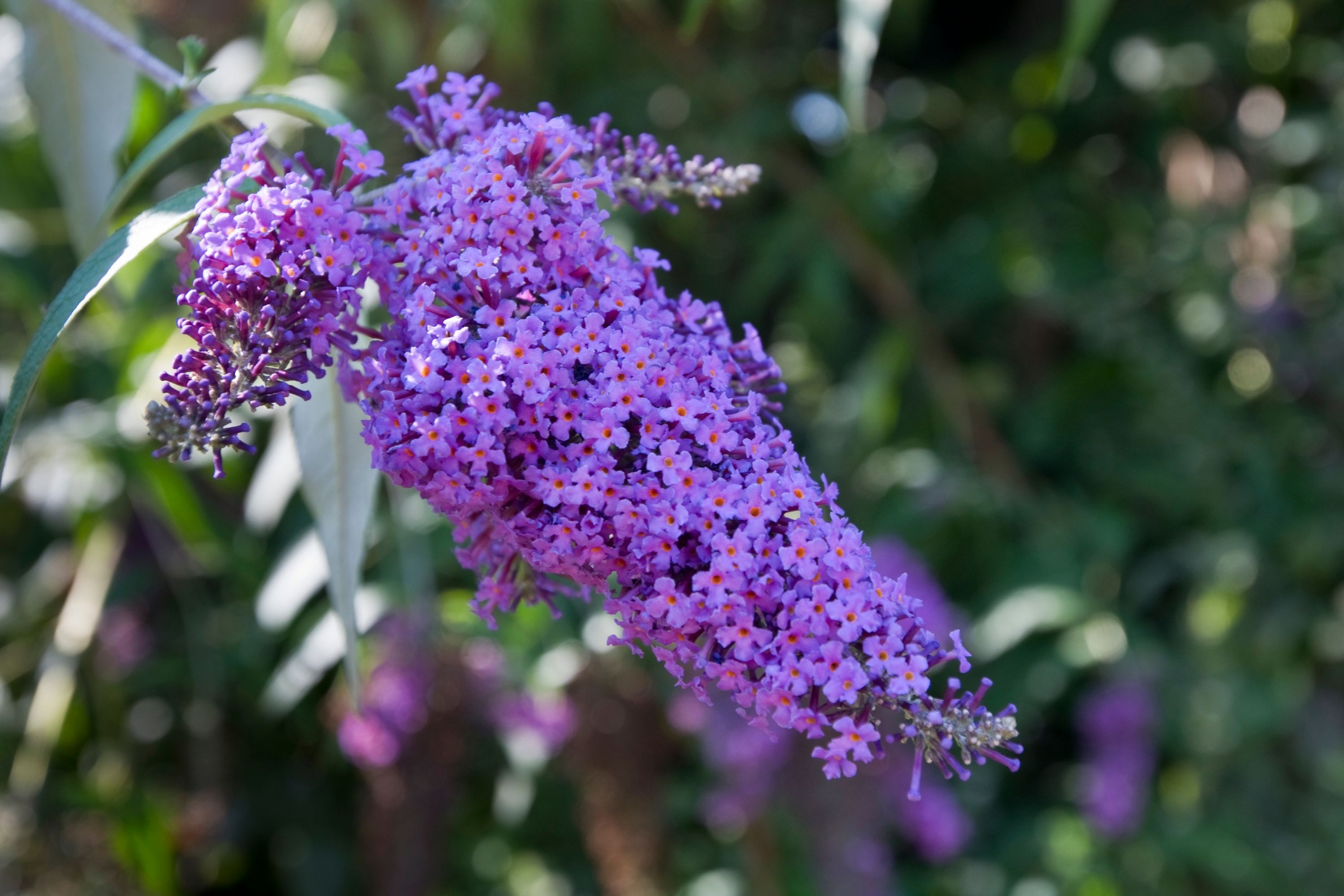Butterfly bush
(Buddleja davidii)

Description
Buddleja davidii, commonly known as butterfly bush, is a deciduous shrub that belongs to the Scrophulariaceae family. Native to China, it was introduced to the West in the 1890s and has since become a popular ornamental plant in gardens around the world. Butterfly bush is named after its ability to attract butterflies, bees, and other pollinators with its fragrant, nectar-rich flowers. In this article, we'll explore the various aspects of Buddleja davidii, including its history, morphology, cultivation, and uses. History and Taxonomy: Buddleja davidii was first described by the French missionary Armand David in 1869, who collected the plant in central China. The plant was named in honor of David, who was a naturalist and plant collector. Buddleja davidii belongs to the Buddlejaceae family, which comprises around 100 species of shrubs and trees distributed throughout the world. The genus Buddleja was named after the English botanist Adam Buddle, who lived in the 17th century. Morphology: Buddleja davidii is a deciduous shrub that can grow up to 5 meters tall and wide. Its leaves are lance-shaped and grow up to 25 cm long and 10 cm wide. The leaves are gray-green in color and covered with fine hairs. The flowers are produced in large, dense panicles at the end of the branches. Each flower is tubular and has four lobes. The color of the flowers can range from white, pink, red, purple, and blue. The flowers are highly fragrant and produce copious amounts of nectar, which attracts butterflies, bees, and other pollinators. The fruit of the butterfly bush is a capsule that contains many small, winged seeds. Cultivation: Buddleja davidii is a hardy plant that can grow in a wide range of soils and climatic conditions. The plant prefers well-drained soil and full sun exposure. It can tolerate drought, but it does not like to be in wet soil for long periods. Buddleja davidii can be propagated from seeds or cuttings. The best time to propagate the plant is in late spring or early summer. Cuttings should be taken from new growth, and seeds should be sown in a well-drained potting mix. The plant should be pruned in late winter or early spring to remove any dead or damaged wood. Uses: Buddleja davidii is primarily grown for its ornamental value. Its attractive flowers and ability to attract pollinators make it a popular choice for gardeners. The plant is also used in landscaping to create hedges, screens, and windbreaks. Butterfly bush is a useful plant for attracting beneficial insects to the garden. It is also a good source of nectar for bees and butterflies, which helps to support local ecosystems. The plant has been used in traditional Chinese medicine to treat a range of ailments, including inflammation, fever, and respiratory problems. Conclusion: Buddleja davidii is a popular ornamental plant that is widely grown for its attractive flowers and ability to attract pollinators. The plant is easy to grow and requires minimal maintenance. Its hardiness and adaptability make it suitable for a wide range of soils and climatic conditions. Butterfly bush is a useful plant for attracting beneficial insects to the garden and supporting local ecosystems. Buddleja davidii has also been used in traditional Chinese medicine to treat a range of ailments. Overall, it is a versatile and valuable plant that deserves a place in any garden.
Taxonomic tree:







